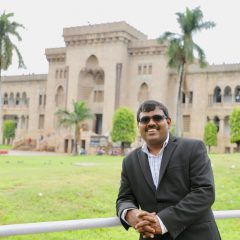
History Professor Jangam Chinnaiah has written a book review of Memoirs of a Dalit Communist: The Many Worlds of R.B. More for The Wire. A short excerpt of his review is included below with the full review, “The Problem of Being a Dalit in the Communist Movement,” available online.
As recalcitrant subjects in Indian history, Dalits were always a problem for the status quo and the politics and ideas that attempted to transform it. True to their outlier position in caste Hindu society as stigmatised beings, they endure abject poverty, and their condition is incomprehensible even to the well-meaning caste Hindu. Yet at times, they become problems for themselves and the people around them because of the swirling stigma and economic deprivations that bog them down and corrode their dignity.
The book under review, Memoirs of a Dalit Communist: The Many Worlds of R.B. More, is about the indomitable spirit of a Dalit communist named Ramachandra Babaji More who rose from an obscure background to become a remarkable political activist and public intellectual. Most importantly, throughout his life, he acted as a bridge between Dalit and communist politics and tried to change the communist party leadership’s stand on the caste question through debates and petitions within the party etiquette’s confines.
Given More’s unique life trajectory, the narrative presented in this book is also quite unusual. More left his autobiography unfinished. His son Satyendra More carried on the mantle of telling the story of his father’s journey not as a history of the family but as a political biography four times bigger than his father’s unfinished text, both written in the Marathi language. This is why the life-narrative is presented not just by the protagonist himself but by three more people.
Through her commitment to the text, English translator Wandana Sonalkar makes us feel as though it is an English original. By introducing sensitivity in the text, Anupama Rao adds historical meaning with the requisite archival cushioning to situate the text in its social and historical dynamics – of Bombay’s urban and Dalit labour politics. In this way, a translator, biographer and historian/anthropologist help us navigate the layered lives of Dalits in cosmopolitan Bombay, which makes the text more fascinating as a bottom-up account of the tumultuous period before and after India’s independence.